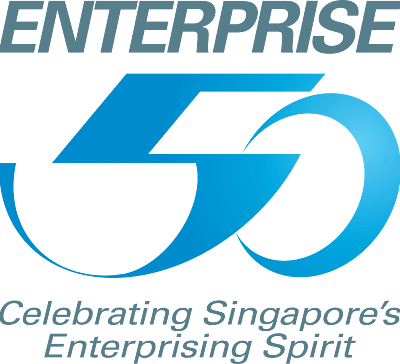[SINGAPORE] Backed by more than two decades of expansion in Vietnam, KinderWorld International Group is now refocusing its growth ambitions on Singapore and Johor Bahru (JB).
Its next phase centres on building a five-campus network for older children in Singapore.
Over the next five years, the group – a five-year winner of the Enterprise 50 Awards, jointly organised by The Business Times and KPMG – plans to open four more international schools in the Republic. These will cater mainly to secondary students aged 13 to 18, offering the Singapore GCE O-Level and A-Level pathways.
The centres will also host adult learners enrolled in distance-learning bachelor’s and master’s programmes.
The first of the five centres opened earlier this year, after KinderWorld acquired SDH Institute, a hospitality and aviation school, for an undisclosed amount.
Renamed SISH Institute, it occupies 36,000 square feet (sq ft) at Paya Lebar Green, a Grade-A office development. KinderWorld has invested S$8 million in renovations and related costs.
These schools adopt a model that chairman and chief executive officer Ricky Tan believes is absent in a landscape “dominated” by Western curricula.
“Singapore-style” option
While Singapore’s international school market is competitive, he sees space for a “Singapore-style” option aimed at foreign families relocating here but unable to secure places in government schools.
Each campus will span about 30,000 sq ft, though the Paya Lebar facility is larger as it also houses the group’s office.
A typical campus can take up to 600 students. Across all five centres, KinderWorld expects to serve up to 3,000 learners annually through a mix of full-day and rotational programmes.
The four remaining centres will require between S$30 million and S$40 million to set up, funded through a mix of bank loans and internal resources.
Expanding to JB
Tan says building new campuses on local land parcels is not financially viable. Greenfield tenders alone can cost about S$50 million for a 30-year lease, he adds, before construction costs that could run into the hundreds of millions.
Instead, the group will lease commercial spaces and situate campuses near MRT stations for accessibility.
To support its Singapore operations, KinderWorld will also expand to JB.
The group is in the process of acquiring a freehold, 50,000 sq ft space in the Princess Cove residential complex. The site, comprising 30,000 sq ft of indoor area and 20,000 sq ft of outdoor space, will be purchased through a combination of bank loans and internal resources.
KinderWorld plans to build the site into an international school similar to its Singapore offerings, with acquisition and renovation costs estimated at about S$15 million. The target opening is before August 2026, when the school year typically begins.
The JB campus will serve international students who want a Singapore-style curriculum but find fees or living expenses too high in the Republic.
Tan says these students will be channelled there in a “feeder school” manner, adding that school fees and living costs in JB will be “significantly” lower.
The decision to expand into JB also hinges on the upcoming JB-Singapore Rapid Transit System (RTS) Link, a 4-kilometre rail line targeted to commence passenger service at the end of 2026.
With RTS Link connectivity, Tan says, a two-campus model spanning Singapore and JB becomes feasible.
A homecoming for the group
This renewed push into Singapore and Malaysia marks what Tan describes as a homecoming of sorts, after two decades in which KinderWorld’s centre of gravity sat firmly overseas.
Before entering education, Tan spent 19 years as a flight engineer with Singapore Airlines, having joined in 1975.
KinderWorld was founded in 1986 by Tan and his wife as a childcare centre in Changi.
He left the airline in 1994, using a “golden handshake” payout to support their early-childhood ventures and fund new education concepts – including one of Singapore’s largest indoor playgrounds at Suntec City in 1995.
The 1997 Asian financial crisis dealt a blow to the Singapore business, as parents tightened their wallets. The company exited the local market in 2000.
Yet, those early projects, Tan says, are what gave him the confidence – and the risk appetite – to push into regional education. He ventured into Vietnam at the turn of the millennium, inspired by then-prime minister Goh Chok Tong’s call for small businesses to “go regional”.
Today, Vietnam is the group’s main market. KinderWorld operates 16 facilities there and employs more than 1,000 staff. These operations – covering K-12 schools, higher education and outdoor-education centres – account for about 90 per cent of group revenue.
After 25 years of building this network, including partnerships with major township developers, Vietnam is now entering a “steady-state” phase. Growth will continue selectively, mainly in Hanoi and Ho Chi Minh City, Tan says.
The operations have been fully localised – a shift made evident during the pandemic, when he did not travel to Vietnam for three years but saw “the operation ran by itself”.
He now expects Singapore and JB to drive the group’s next phase of expansion. As the five Singapore campuses and the JB facility ramp up, Tan anticipates the group’s revenue mix – currently 90 to 10 in favour of Vietnam – to equalise by 2030.
Hong Kong on the horizon
Another market KinderWorld hopes to enter is Hong Kong – with a targeted opening by 2027.
The timing is deliberate. That is when the group plans to pursue an initial public offering (IPO) in Hong Kong, having made two unsuccessful attempts to list in Singapore in 2018 and 2020 due to valuation mismatches.
Ahead of another IPO bid, Tan says it would be logical to establish a centre in the city. The plan is for a 30,000 sq ft campus similar to its Singapore blueprint, allowing potential investors to view its offerings first-hand.
Hong Kong would also see a strong catchment of students, given its proximity to Mainland China.
Tan explains that KinderWorld is leaning towards a Hong Kong listing because of the city’s higher liquidity, and because education players have historically traded poorly on the Singapore bourse.
“My organisation can create an education ecosystem circling around the Singapore government’s (education) curriculum for students in Hong Kong,” he adds.





